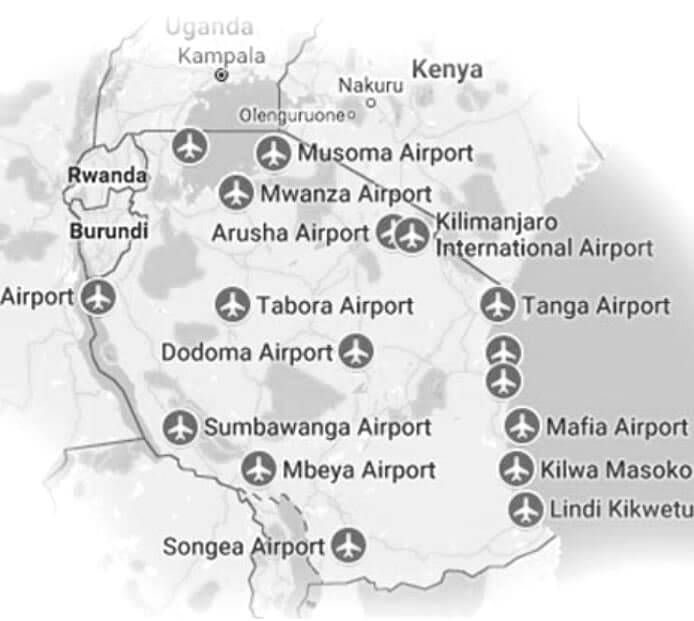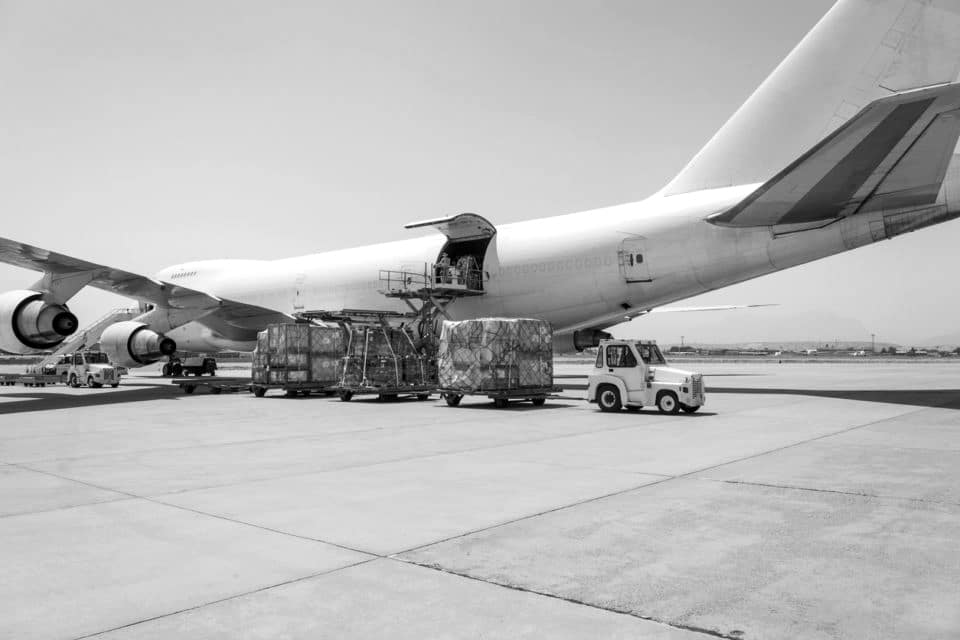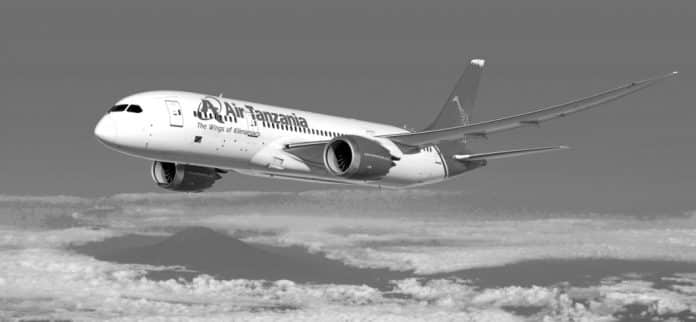Air Transport in Tanzania – Passenger and Freight Aircraft

Tanzania’s airports play a key role in transport infrastructure in the country. As well as being an international gateway, airports have a history of being used for domestic air transport in Tanzania and been a leader in the provision of developmental opportunities in rural areas. In total, the country has 368 airports, and 58 of those airports are under the control of the Tanzania Airports Authority (TAA) on the mainland. Most airports are private airports owned by mining companies and operators of tourism activities.
Despite the long history of the transport industry in bringing airport transport development in Tanzania, the presence of a few international airport transport companies in Tanzania, and national airlines – Air Tanzania, is hampering air transport development in Tanzania. At a time when most travel routes are very long, and you do need to travel long hours by road, but the demand for air travel has remained low, and it is not growing as fast as in other countries. This situation is compounded by the pace of development and the fact that many people are unable to travel mainly by air transport due to their low economy. Low demand, high operating costs, and low competition have led to higher airline ticket prices compared to other parts of the world and this has affected the growth of the airline industry.
The image below shows the areas with airports within Tanzania. Airports are located in various parts of the country, especially in major cities that are dependent on people and businesses.
Information About Air Transport in Tanzania
Passengers

At present, there are more than three million passengers, with approximately 48% being international passengers, and 58% are domestic passengers. International passengers are widely available at four (4) airports: Dar es Salaam, Kilimanjaro, Zanzibar and Arusha, and many domestic passengers also use these airports as well as Mwanza airport. Many other airports are used by fewer passengers. Of the 56 airports listed on the TAA, only 15 had at least 2500 passengers for the entire 2011 year. Departs are similar. Thus, it generally indicates that there are many airports with fewer passengers, and there are fewer airports with more passengers. Figure 29 below shows the number of travelers throughout the year for the 12 major airports in the country.
For the industry as a whole, estimates show that passengers are expected to increase 10.9% per annum until 2016 looking at 2011 as a base. This growth rate is similar to the growth rate predicted by those who conducted previous research on this project. While more passengers are using JNIA airport in Dar es Salaam, global growth indicates the presence of fewer passengers at almost all airports. There are expectations for JNIA growth by 12% per annum basing on passenger increase from 1.8 million in 2011 to 3.2 million in 2016. These estimates are in line with historical growth estimates from 2001 to 2010, a situation that is similar to growth, situation that is equal to an average increase of 13% per annum basing on practical implementation.
Passenger rates in many small airports that are heavily used by domestic travelers are expected to grow significantly compared to international travelers, where they are expected to increase + e by 4% to 8% depending on the airport and its contribution to its local economy. Mwanza, the busiest airport in addition to the three international airports, is expected to grow by 8.6%, with an increase in passengers from 320,000 passengers per year to 480,000 passengers in 2016. Another airport under TAA with more than 100,000 passengers per annum is Arusha where the annual demand rate is currently 112,000 passengers and is expected to reach 158,000 passengers by 2016. In other high-end airports such as Kigoma, Bukoba, and Mtwara passenger annual per year is expected to remain less than 30,000 passengers to 40,000 passengers (Fig. 29). Stats estimates of air travelers for airports under the TAA indicates that most airports will continue to have a low passenger pass rate for the next five years.
Passenger Rate at Airports (’000)
| S/N | Airport | International | Local | ||||||||
| 2006 | 2007 | 2008 | 2009 | 2010 | 2006 | 2007 | 2008 | 2009 | 2010 | ||
| 1. | Dar es Salaam | 659 | 754 | 823 | 788 | 870 | 486 | 581 | 604 | 578 | 697 |
| 2. | Kilimanjaro | 208 | 243 | 251 | 243 | 283 | 161 | 200 | 185 | 133 | 141 |
| 3. | Wanzi+ar | 197 | 221 | 207 | 222 | 216 | 289 | 300 | 292 | 281 | 325 |
| 4. | Arusha | / | / | 128 | 84 | 86 | 76 | 61 | 125 | 107 | 139 |
| 5. | Bukoba | – | – | – | – | – | 22 | 24 | 24 | 22 | 18 |
| 6. | Dodoma | – | – | 146 | 84 | 1 | 7 | 6 | 5 | 5 | 6 |
| 7. | Kigoma | 2 | – | 1 | 1 | – | 18 | 22 | 25 | 22 | 24 |
| 8. | Moshi | – | – | – | – | – | 1 | 1 | 1 | 1 | 1 |
| 9. | Mtwara | 3 | / | 1 | 31 | 1 | 24 | 28 | 22 | 22 | 25 |
| 10 | Mwanza | 10 | 6 | 1 | 8 | 13 | 184 | 217 | 410 | 203 | 200 |
| 11. | Shinyanga | – | – | – | – | – | 14 | 12 | 10 | 8 | 6 |
| 12. | Tabora | – | – | – | – | – | 11 | 12 | 13 | 13 | 11 |
| 13. | Others | 64 | 9 | 1 | 9 | 12 | 98 | 177 | 51 | 9 | 21 |
| Jumla | 1,143 | 1,233 | 1,559 | 1,470 | 1,482 | 1,391 | 1,641 | 1,767 | 1,404 | 1,614 | |
Source: TCAA
Cargo Planes

Cargo planes are available at a few airports in Tanzania, and most are located at JNIA airport. Within 2011, JNIA was responsible for 89% freight shipping against all existing airports under TAA. From 2005 to 2011, freight forwarding at JNIA increased + y by an average of 8.7% per annum from 14,000 tonnes to 23,000 tonnes per annum.
Cargo imported into the country is 90% of all air cargo. One third of these cargo consists of machinery and electronics products, the fifth component consists of mirrors, and stone vessels, and the remainder is of unidentified cargo. Exports include large quantities of animals and animal products, machinery and metal.
Cargo rates at some airports have been low, whereby major airports handle an average of 100 to 200 tons per year, while the remaining airports have very low cargo rates. Mwanza Airport had a large amount of cargo due to transporting fish, and fish products to Europe using direct flights. However the situation has changed due to problems air transport in Tanzania, particularly the challenges posed by the infrastructure of its airport being of low quality as well as transporters decided to pack more cargo in single trips. At present, the cargo that used to be transported through the airport is loaded by trucks to Nairobi, where it is airlifted to Europe. As a result, freight forwarding at Mwanza airport has plummeted from the high number of tons that were transported before 2005.
The cargo rate is expected to remain low, with the exception of JNIA which is expected to increase by 9.6% per annum to 36,000 tons within 2016. Other airports are expected to have freight increases as the special economic sectors expand. Thus, due to the growth of the oil and gas sector, Mtwara expects to have a freight increase of more than 50% over the next five years. Also, the Mafia airport that exerts power in the tourism industry is estimated to have an increase in the transportation market. However, although there is expected growth in the areas mentioned, trade in general will remain low by about 1 ton per day. There are other areas with very low rates which are also expected to increase in transportation including Bukoba, Shinyanga, and Musoma.
Although KIA ranks second in terms of cargo, the cargo rate of 4,000 tons per year is still small. In total, about 60% of the goods that are exported, half of them are vegetables. Other shipments include metals, machinery and electronics, and animal products. Imported goods include chemicals and industrial products related to chemicals, machinery, transport and vegetable products.
The cargo rate is expected to increase up to 5,000 tonnes by 2016 in this air transport sector. From this perspective, the importance of air transport in Tanzania is still high and something that needs to be exploited more (Tip: explore article “Major Institutions in Tanzania Airport Sector” for a detailed understanding of the Tanzanian airport sector and entities involved).
For more articles on airlines in Tanzania click here!


































